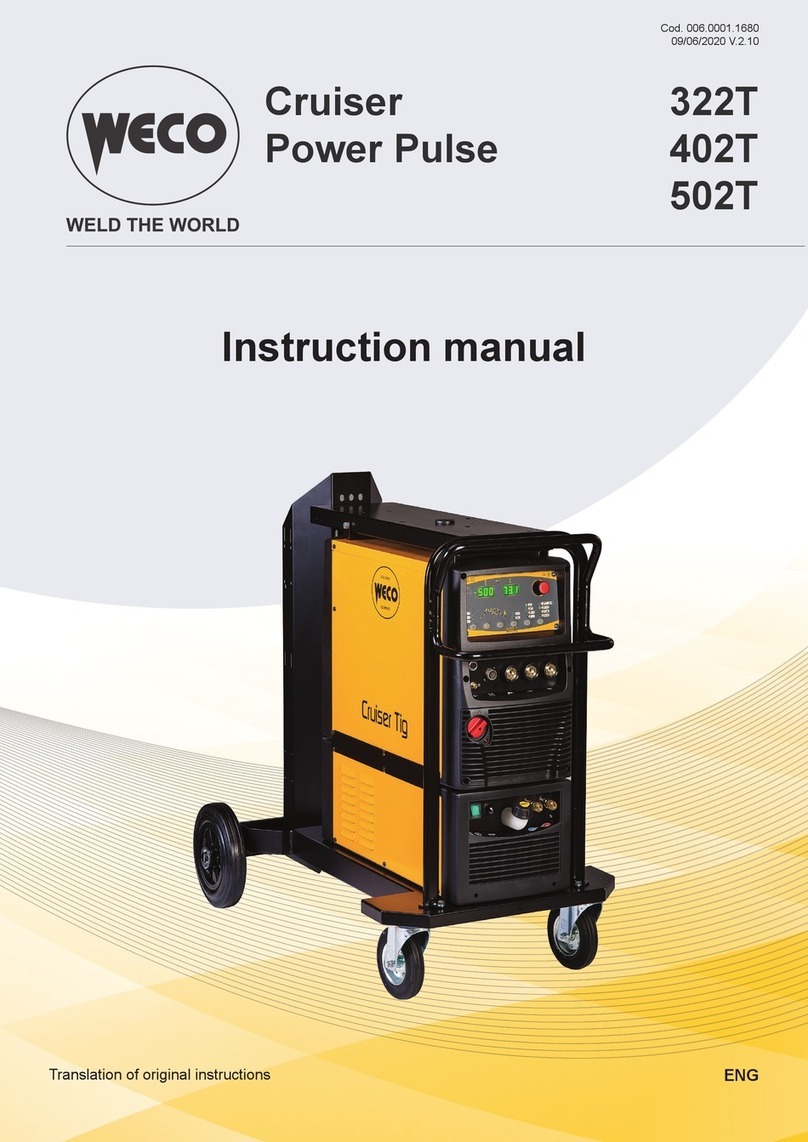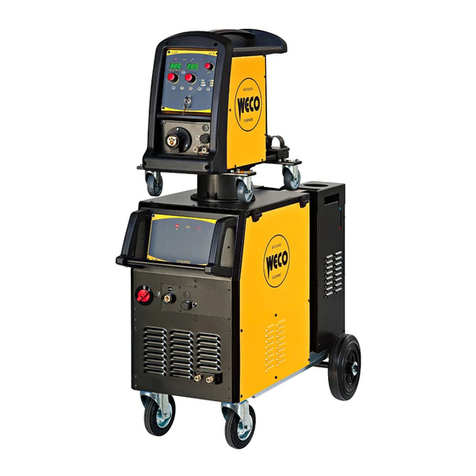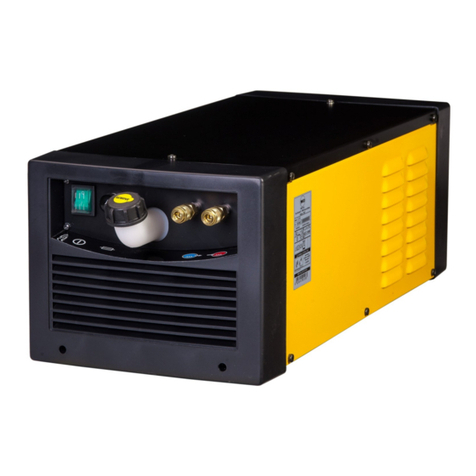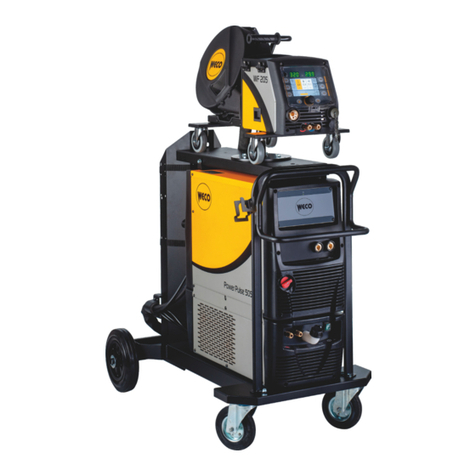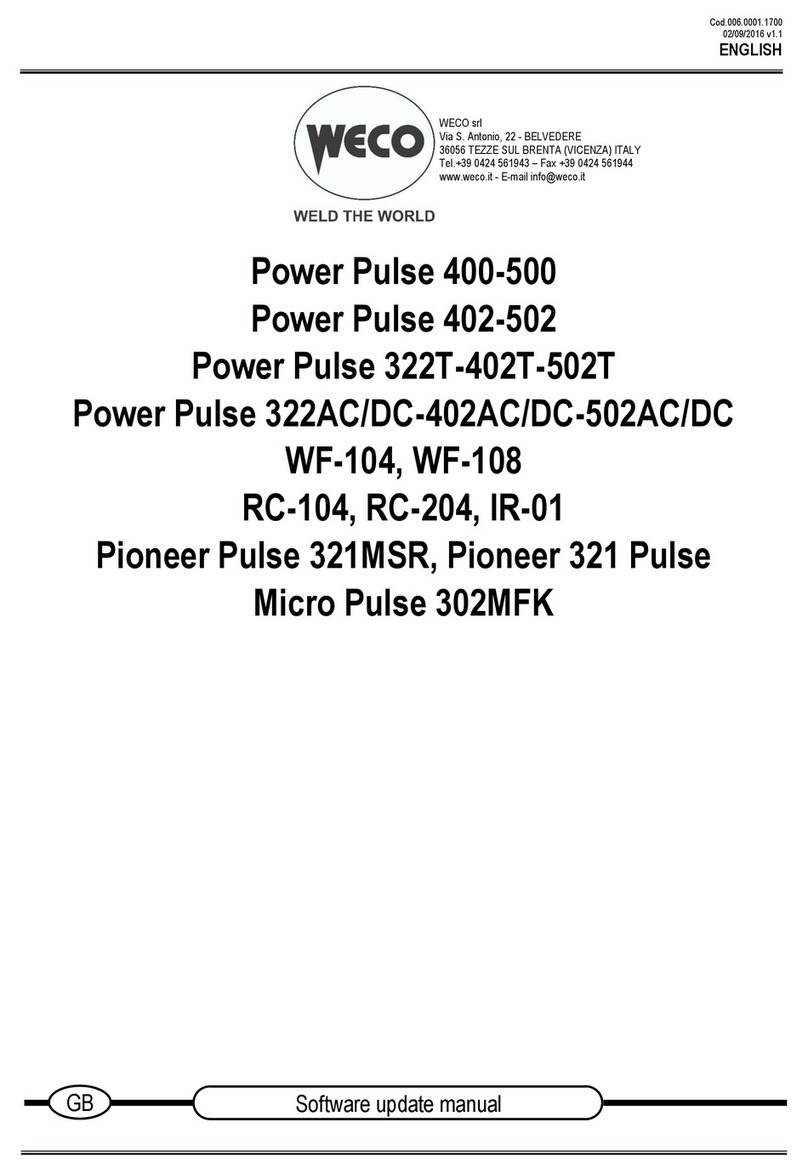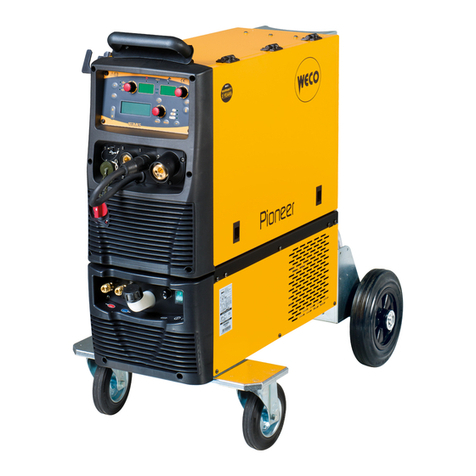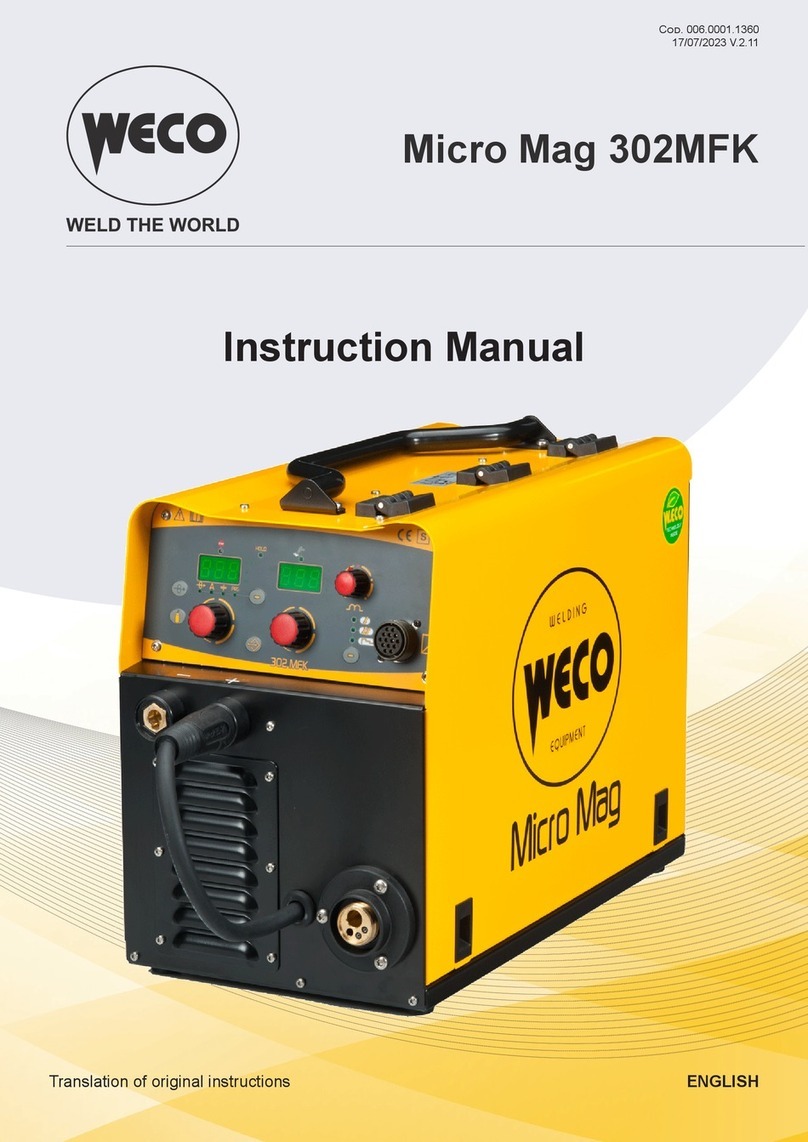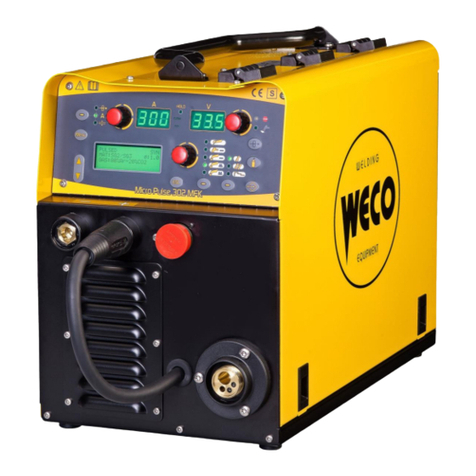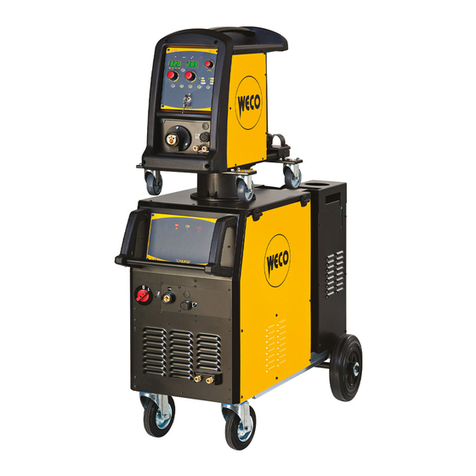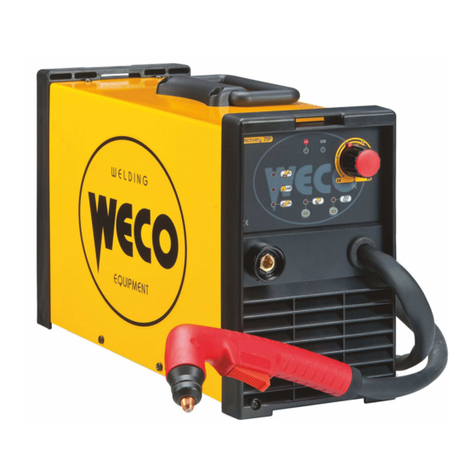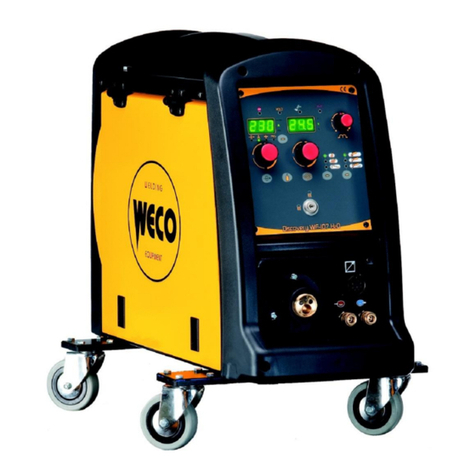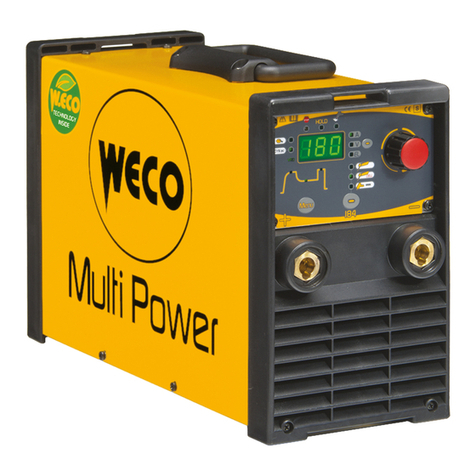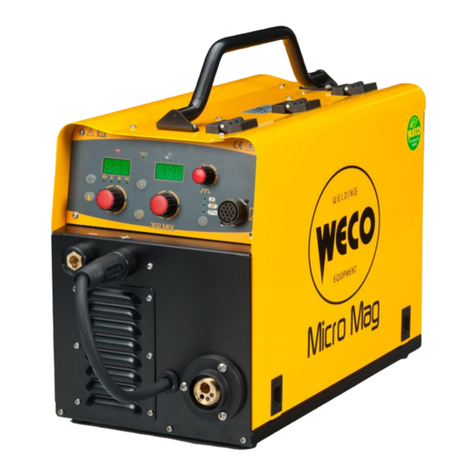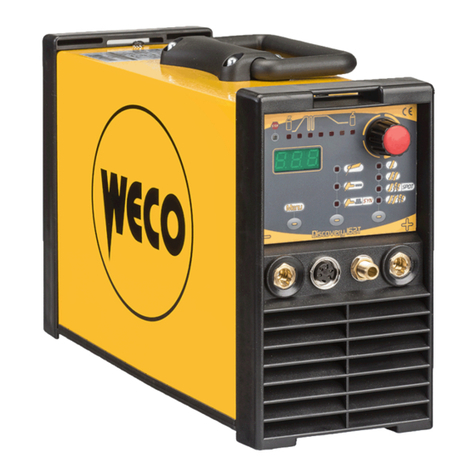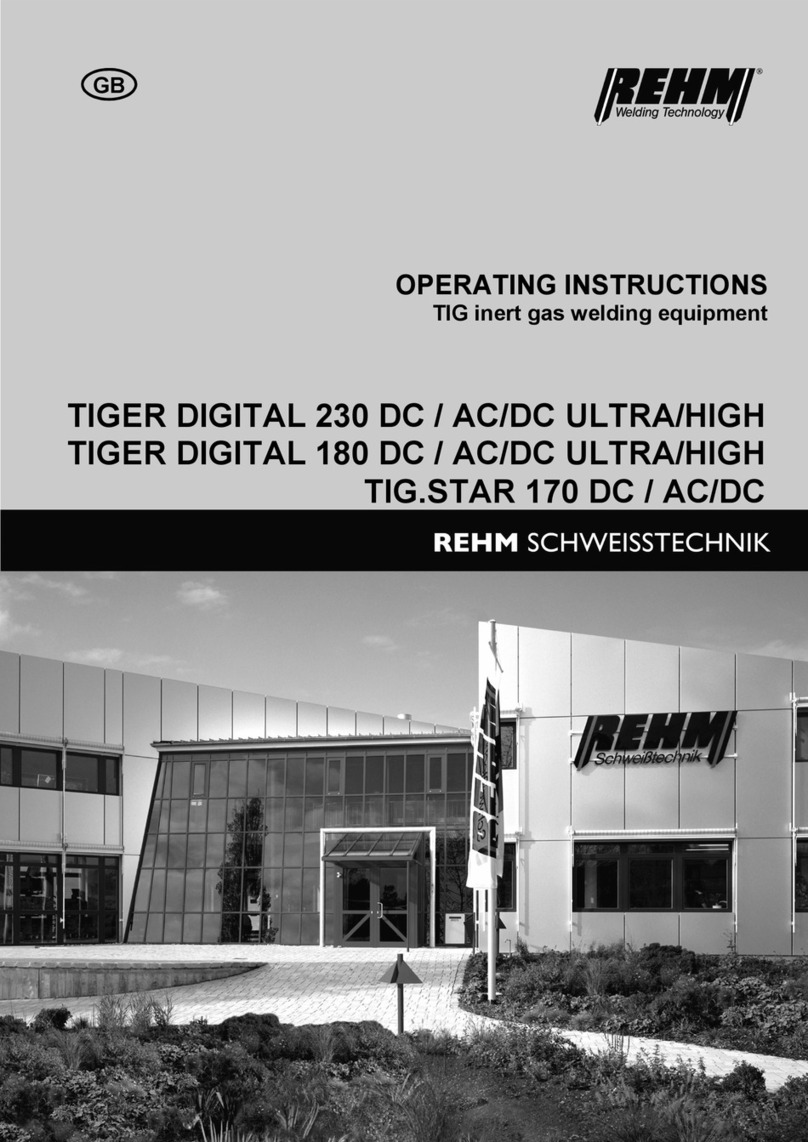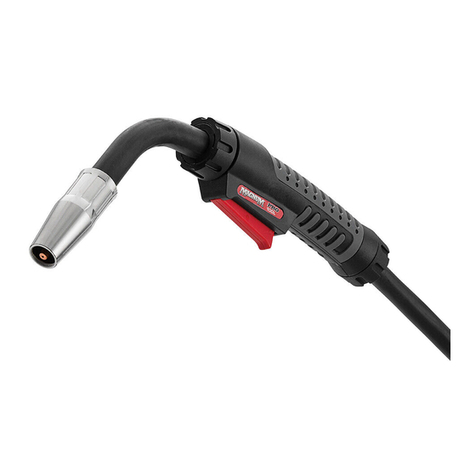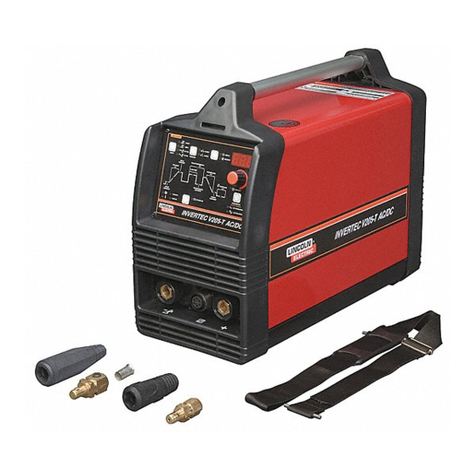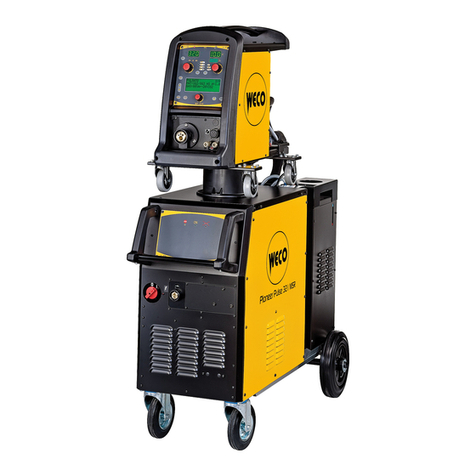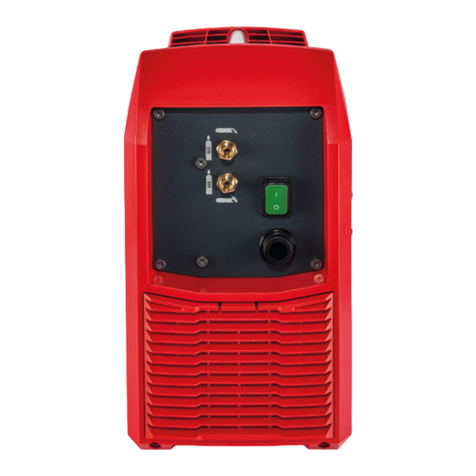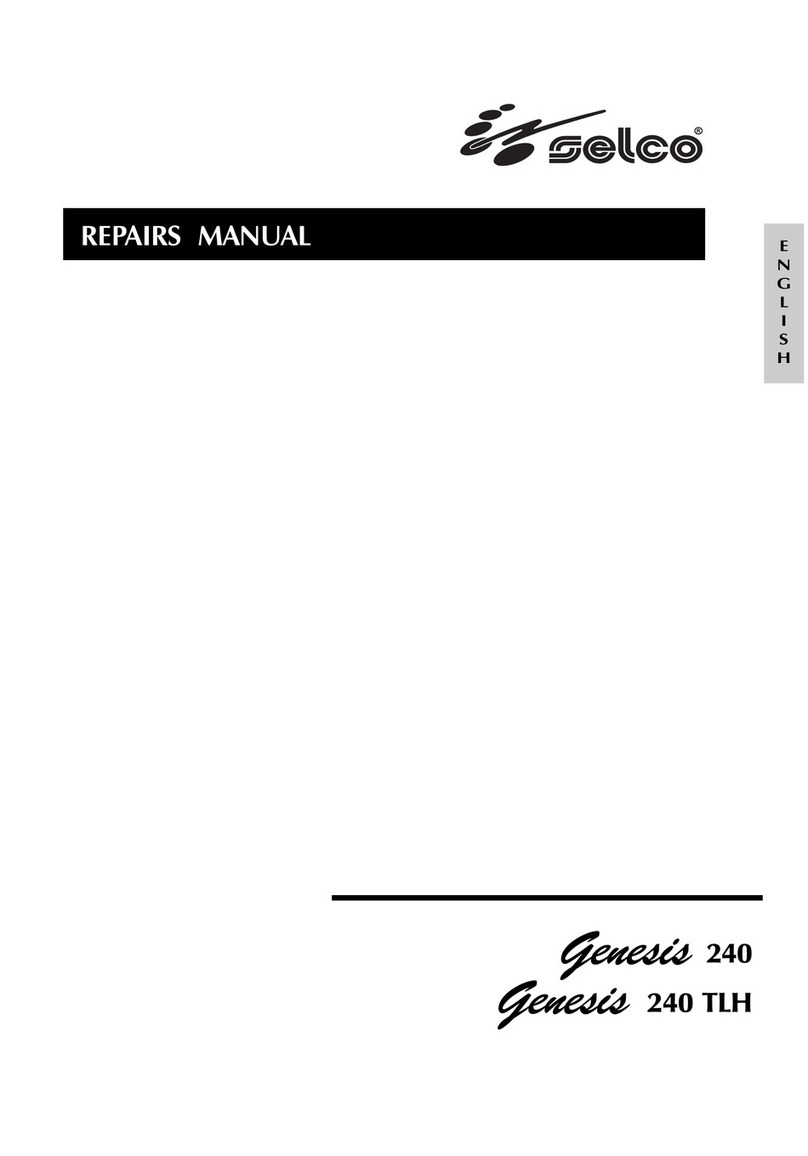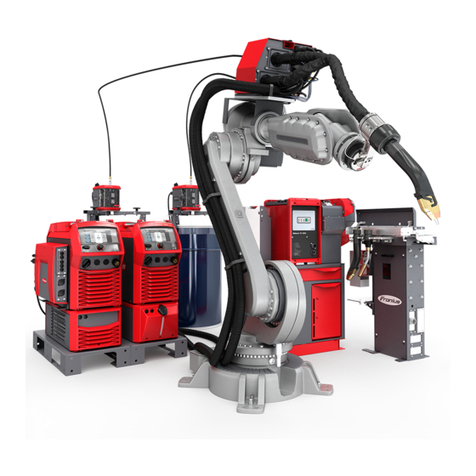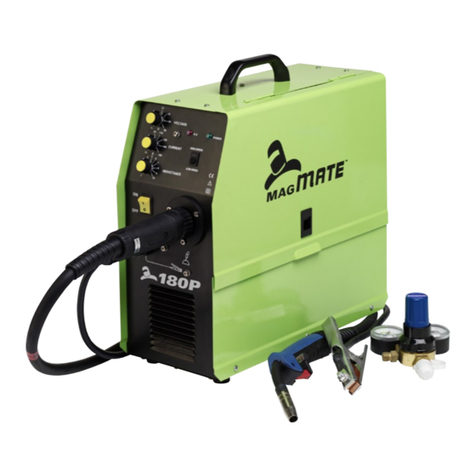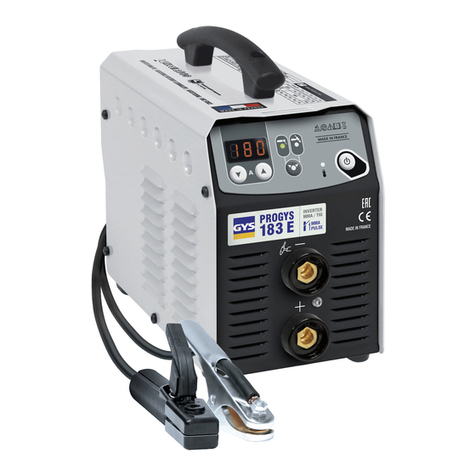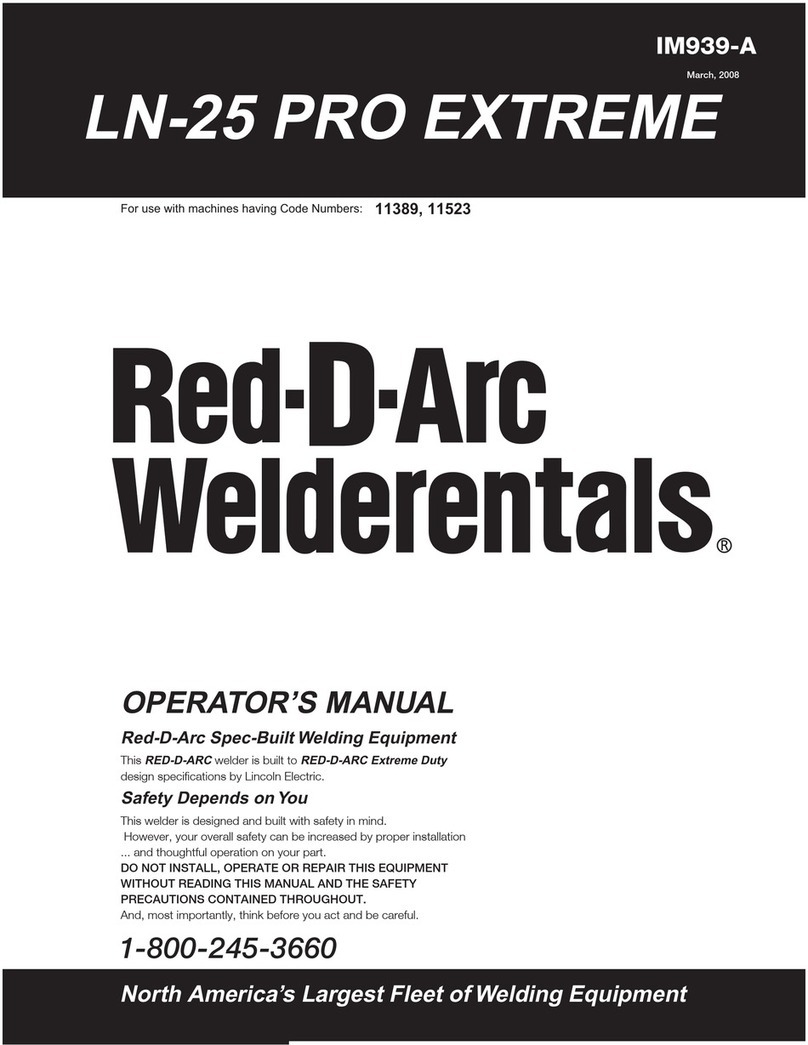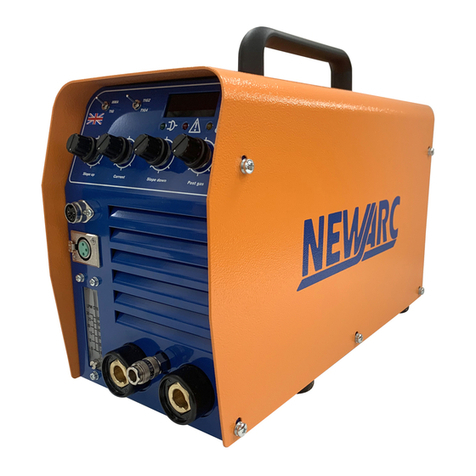
Cod.006.0001.1340
20/02/2014 v2.11
ENGLISH
4.3 WELDING PARAMETERS
For a better understanding of the parameter functions described in the table, refer to the following diagram.
WELDING CURRENT
Output current value during welding.
PRE-GAS TIME
Time of gas delivery before the arc strike.
This adjustment is required when fixing points must be created or
when welding in hard-to-reach positions that call for the presence of
inert atmospheres before striking the arc.
Consequences of a higher value:
-This parameter allows a shielded environment to be created,
thereby eliminating contaminants at the start of the welding pass.
SLOPE UP
Time during which the current changes from the starting value to the
welding value by means of a slope.
This setting is used to avoid damaging the edges of the joint with
excessively high current values at the moment of arc striking. The
value of the main welding current is increased gradually in order to
control the uniformity of material deposition and weld penetration.
SECOND CURRENT B-LEVEL
With a rapid press and release (less than 0.5 seconds) of the torch
trigger during welding, the output current value switches to the value
set by means of the “B-level second current” parameter.
This function makes it possible to avoid interrupting the welding
process when the geometry of the workpiece changes; alternatively,
the welding current can be reduced to decrease heating of the part if it
becomes too hot during execution of the welding process.
In DC TIG welding, the parameter is useful when welding different
gauge workpieces during the same pass; when moving between
different gauges the output current can be changed simply by
pressing the torch trigger.
BASE CURRENT
Pulsed wave minimum current.
Consequences of a higher value:
-Faster creation of weld pool.
-Increase of heat-affected zone.
PEAK TIME
Time for which the current pulse is at the maximum value.
Consequences of a higher value:
-Greater weld penetration.
-Facility to make deeper cuts.
Consequences of a lower value:
-Reduction of heat-affected zone.
-Difficult to create a weld pool.
PULSED CURRENT FREQUENCY
Consequences of a higher value:
-Slower melt speed.
-Reduction of heat-affected zone.
BASE TIME
Time during which current output is at the base value.
Consequences of a higher value:
-The filler material is spread more evenly.
-Increase of heat-affected zone.
DOWN SLOPE
Time during which the current changes from the welding value to the
end value by means of a slope.
FINAL CURRENT
During electrode welding the parameter makes it possible to obtain a
uniform deposit of filler material from the start to the end of the
welding process, closing the deposition crater with a current such as
to deposit a final droplet of filler material.
By keeping the torch trigger pressed during the 3rd time, the crater
filler current is maintained thereby ensuring optimal crater filling, until
the post gas time is started by releasing the torch trigger (4th time).
POST GAS TIME
Time of post gas delivery when the welding arc is extinguished.
Consequences of a higher value:
-More effective pickling (improved appearance of workpiece at the
end of the welding pass).
-Higher gas consumption.
Consequences of a lower value:
-Lower gas consumption.
-Oxidation of electrode tip (more difficult arc strike).
AC FREQUENCY
The picture below shows the example where the wave on the second
graph has a double frequency compared with the first.




















